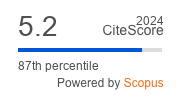Article | Open Access
Show Me the Money: Side‐Payments and the Implementation of International Agreements in Federal Systems
| Views: | 1600 | | | Downloads: | 1008 |
Abstract: Federal systems face specific challenges in fulfilling their international commitments. In cases of shared jurisdiction, the federal government needs the sub-federal level to contribute to the implementation process. Both Canada and the EU have used side-payments to bring and keep on board reluctant and opposing provinces and member states in the implementation of international agreements. However, both cases have experienced the limits of this strategy. This article aims to make a theoretical contribution by identifying the causal conditions and processes that help explain the success and failure of using side-payments to encourage sub-federal support for the implementation of an international agreement. Based on the study of the implementation of the Paris Agreement in Canada and the EU, I develop a two-fold argument. First, side-payments can be an effective tool to persuade sub-federal governments if they are generally interested in contributing to implementation. They do not work for governments of powerful entities that are unwilling to implement. Second, sub-federal governments react to other actors’ conduct. Side-payments can keep reluctant governments of weak entities on board only as long as no alliance of powerful sub-federal entities is formed that resists the implementation of an international agreement.
Keywords: Canada; European Union; federalism; implementation; international agreements; Paris Agreement; side‐payments
Supplementary Files:
Published:
Issue:
Vol 11, No 3 (2023): United in Uniqueness? Lessons From Canadian Politics for European Union Studies
© Johannes Müller Gómez. This is an open access article distributed under the terms of the Creative Commons Attribution 4.0 license (http://creativecommons.org/licenses/by/4.0), which permits any use, distribution, and reproduction of the work without further permission provided the original author(s) and source are credited.


